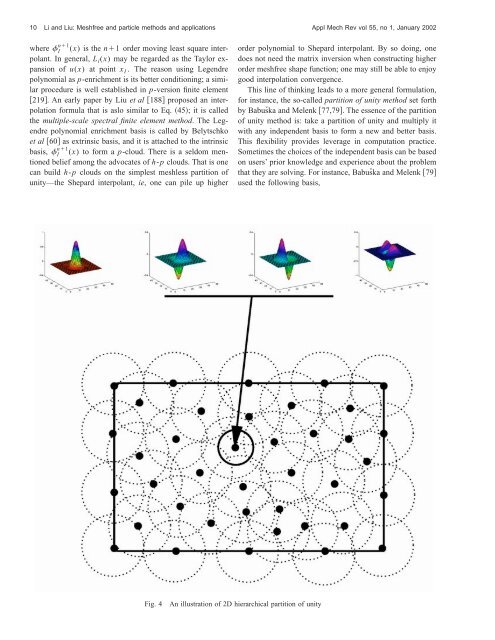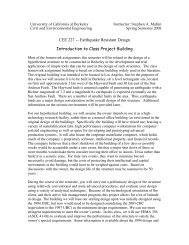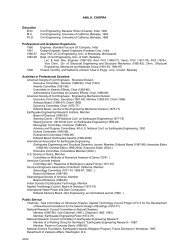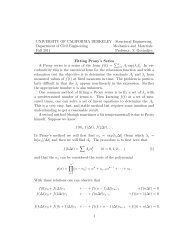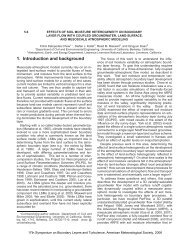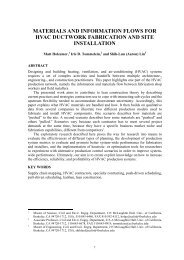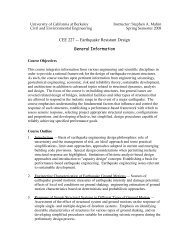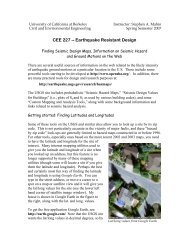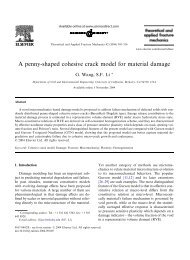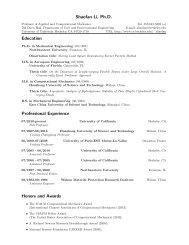Meshfree and particle methods and their applications - TAM ...
Meshfree and particle methods and their applications - TAM ...
Meshfree and particle methods and their applications - TAM ...
Create successful ePaper yourself
Turn your PDF publications into a flip-book with our unique Google optimized e-Paper software.
10 Li <strong>and</strong> Liu: <strong>Meshfree</strong> <strong>and</strong> <strong>particle</strong> <strong>methods</strong> <strong>and</strong> <strong>applications</strong> Appl Mech Rev vol 55, no 1, January 2002<br />
where I n1 (x) is the n1 order moving least square interpolant.<br />
In general, L i (x) may be regarded as the Taylor expansion<br />
of u(x) at point x I . The reason using Legendre<br />
polynomial as p-enrichment is its better conditioning; a similar<br />
procedure is well established in p-version finite element<br />
219. An early paper by Liu et al 188 proposed an interpolation<br />
formula that is aslo similar to Eq. 45; it is called<br />
the multiple-scale spectral finite element method. The Legendre<br />
polynomial enrichment basis is called by Belytschko<br />
et al 60 as extrinsic basis, <strong>and</strong> it is attached to the intrinsic<br />
basis, I n1 (x) to form a p-cloud. There is a seldom mentioned<br />
belief among the advocates of h-p clouds. That is one<br />
can build h-p clouds on the simplest meshless partition of<br />
unity—the Shepard interpolant, ie, one can pile up higher<br />
order polynomial to Shepard interpolant. By so doing, one<br />
does not need the matrix inversion when constructing higher<br />
order meshfree shape function; one may still be able to enjoy<br />
good interpolation convergence.<br />
This line of thinking leads to a more general formulation,<br />
for instance, the so-called partition of unity method set forth<br />
by Babuška <strong>and</strong> Melenk 77,79. The essence of the partition<br />
of unity method is: take a partition of unity <strong>and</strong> multiply it<br />
with any independent basis to form a new <strong>and</strong> better basis.<br />
This flexibility provides leverage in computation practice.<br />
Sometimes the choices of the independent basis can be based<br />
on users’ prior knowledge <strong>and</strong> experience about the problem<br />
that they are solving. For instance, Babuška <strong>and</strong> Melenk 79<br />
used the following basis,<br />
Fig. 4<br />
An illustration of 2D hierarchical partition of unity


